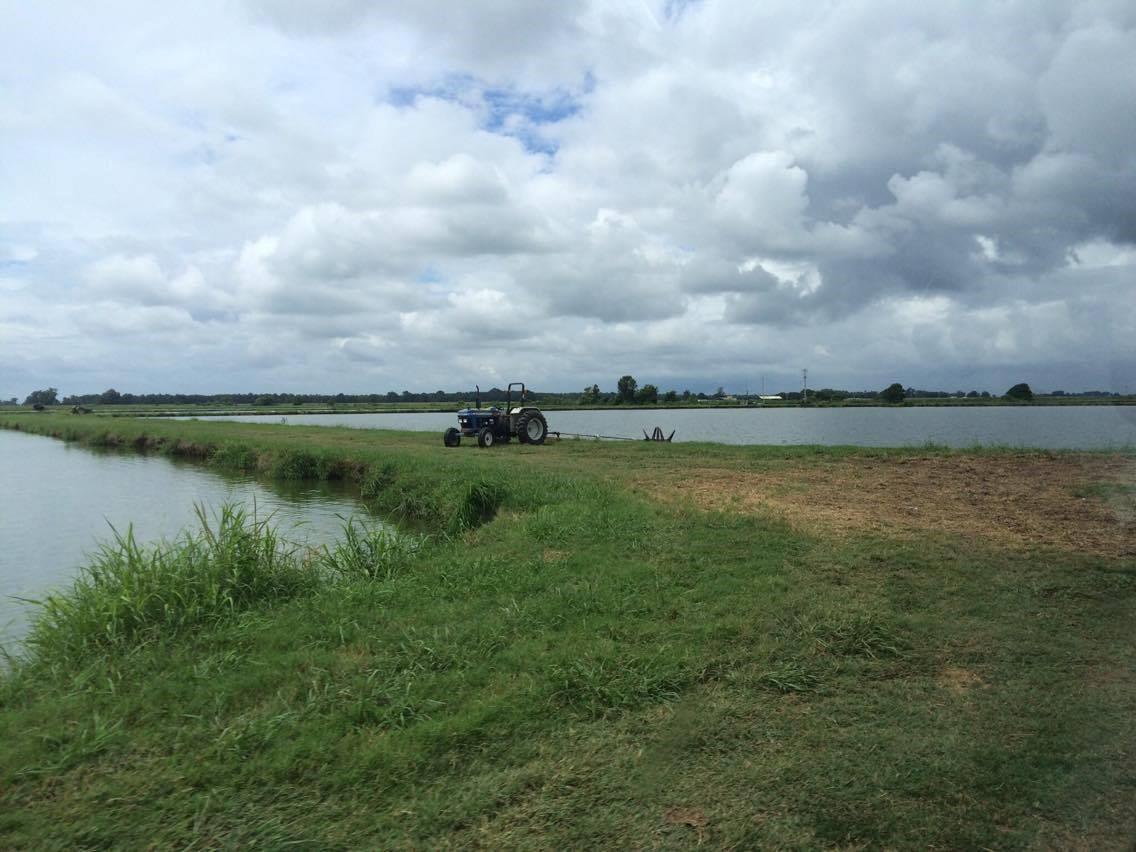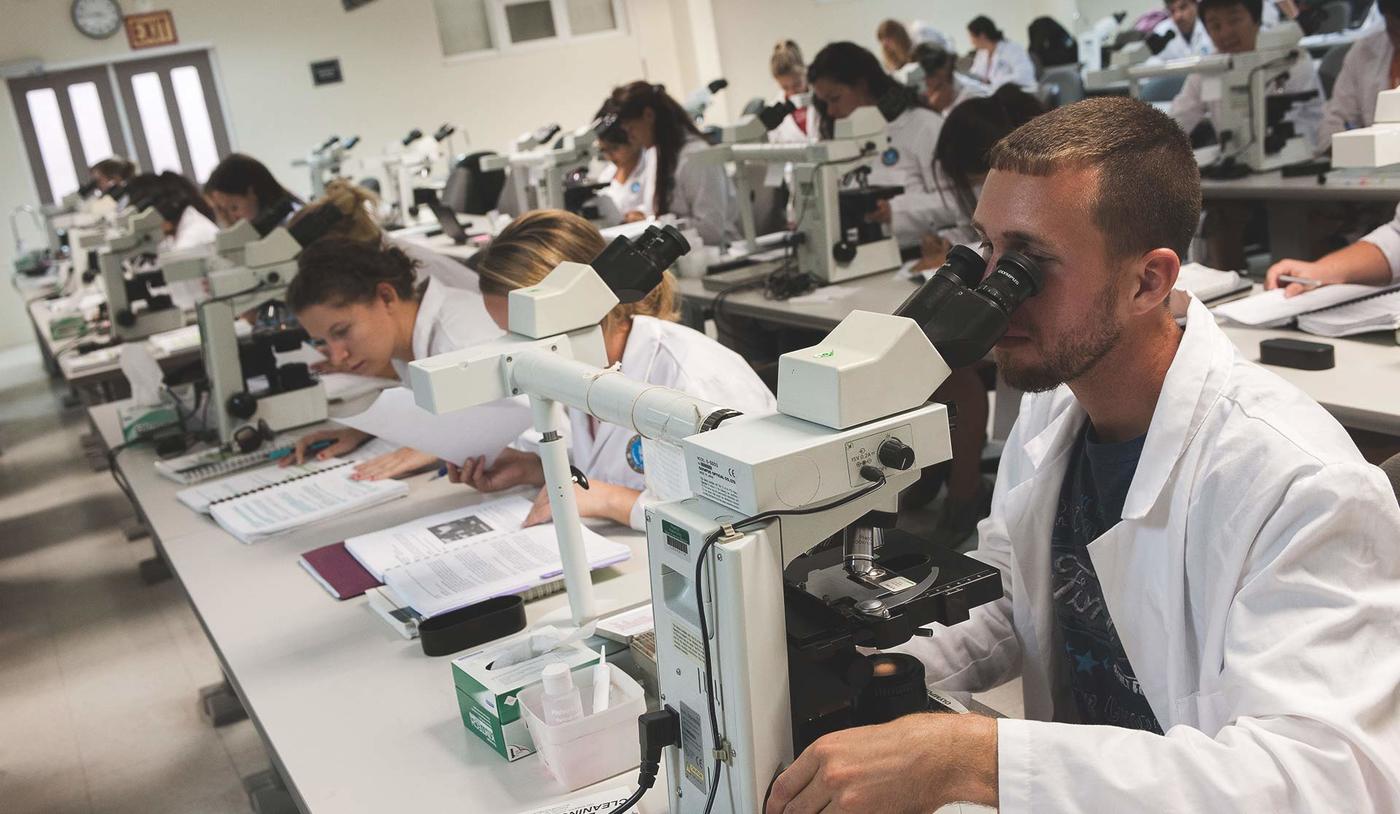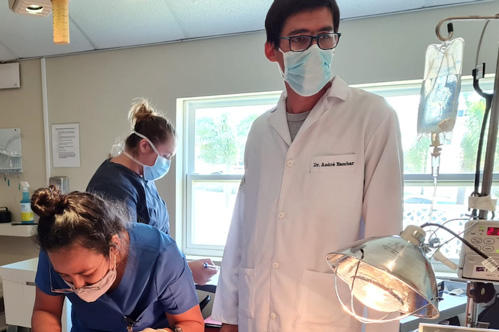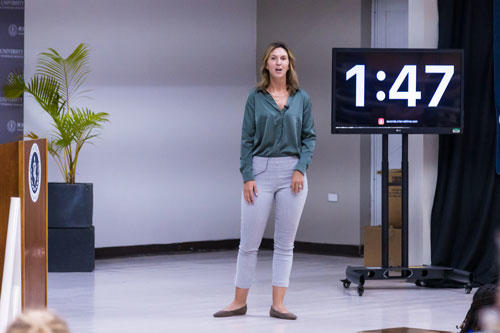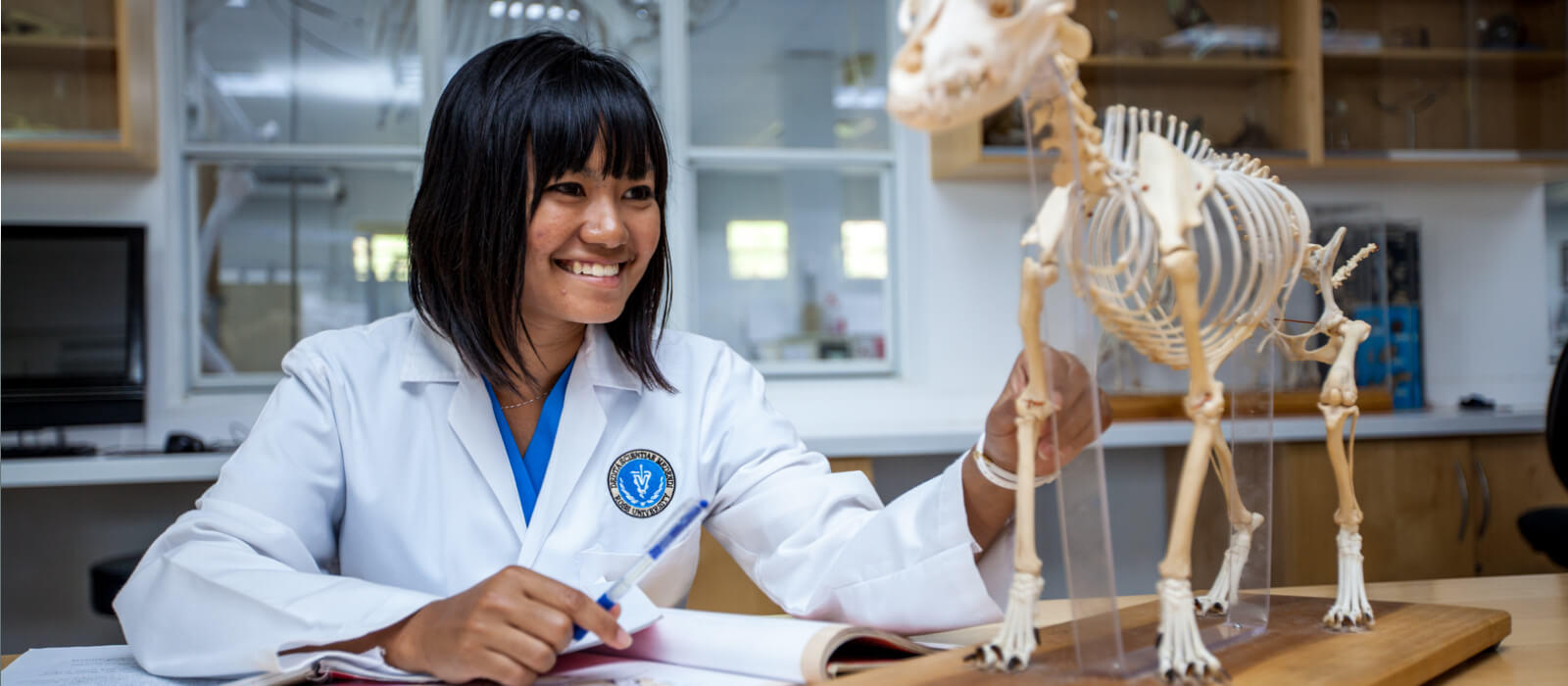Aquaculture Externship
As an RUSVM student, I spent a 2-week externship in Stoneville, Mississippi during my clinical year at the aquaculture center located at a Mississippi State University extension site. Here, I spent time in the diagnostic services lab that provides aid to catfish producers in the surrounding region. I also participated in field sampling and was exposed to the common diseases of catfish via disease case submissions as well as previously prepared samples. Each species of fish has a unique life cycle and husbandry requirements, yet the principles of herd health management remain the same.
Channel catfish production contributes an estimated $16 billion dollars to the United States economy. Driving along vast 10.5 acre ponds, you wouldn’t know there are 20,000-40,000 fish swimming below the serene waters. These fish will take about 18-24 months to reach a harvest weight of between 1-2 pounds. During that time, they will be exposed to environmental hazards such as inclement weather, waterfowl that transmit parasites, snails that act as intermediate hosts, & toxic algal blooms. I became involved with aquatic veterinary medicine research when I began working with Dr. Esteban Soto (who taught Bacteriology) investigating the potential in vitro synergistic effects of antibiotics against a common fish pathogen. Then I helped develop a dissection manual for the Queen conch to aid in assessing their population health around St. Kitts with Dr. Michelle Dennis, Associate Professor of Anatomic Pathology at RUSVM.
With the expertise of the researchers at the aquatic research and diagnostic laboratory, fish producers can be spared losses and decrease disease burden on their stock, while providing a healthy fish for consumers. For example, scientists of the Mississippi Agricultural and Forestry Experiment Station, located at the aquaculture center, have recently developed an effective vaccine against the common fish pathogen Edwardsiella ictaluri. This saves the farmer from experiencing a 50-80% mortality if the disease were to affect their ponds.
I worked with Dr. Lester Khoo, the director of the diagnostic services lab, in learning how to do basic diagnostic workups on moribund fish that farmers brought in and also analyze water quality. I also worked with Dr. Matt Griffin & Dr. Stephen Reichley in running qPCR and DNA isolation on pathogen samples to help discover an accurate way to diagnose a diseased animal for that specific disease. They constantly amazed me with their patience and knowledge in the field when they spent time explaining “the basics” to a newbie like me.
Overall I had a fantastic time enjoying the quiet pace of the Deep South, good gas station fried chicken, and coasting along the Blues Highway.



